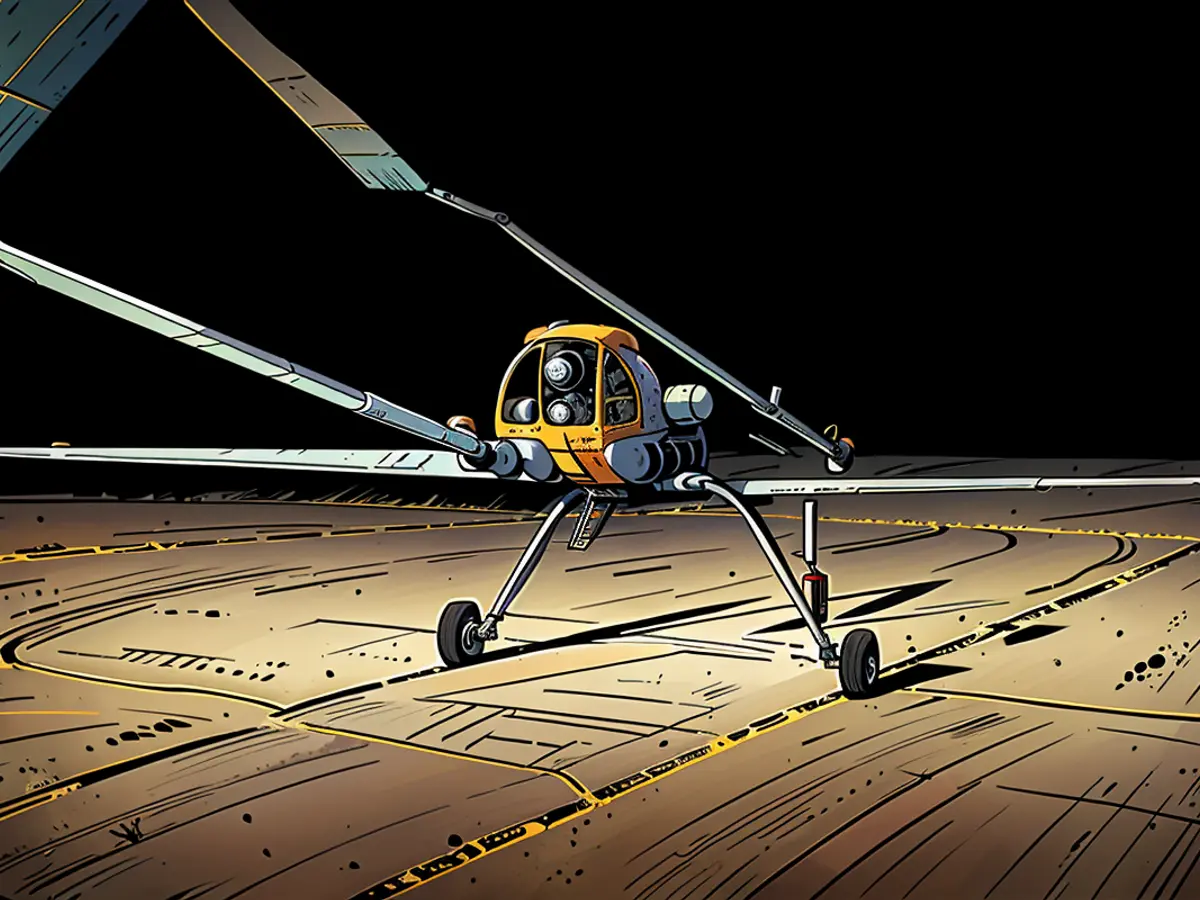"This isn't playtime; it's a battlefield": Exclusive look into a clandestine Ukrainian drone squad attacking Russian territories
Affixed to the front of the gray apparatus is a yellow badge emblazoned with an owl, its wings spread wide and clutching a blade – the distinctive emblem of Ukraine's defense intelligence, the GUR.
Two aviators wearing identical owl badges on their uniforms perform last-minute checks within the vehicle prior to nodding their approval: “Let’s get going!”
A high-speed, 50-second dash ensues, culminating in the 13-foot long, 23-foot wide AN-196 Liutyi drone vanishing without a trace into the pitch-black Ukrainian night.
The drone's destination lies deep within Russian territory.
CNN was granted exceptional, behind-the-scenes access to one of Ukraine’s long-distance drone teams, a subdivision of the GUR. They refer to themselves as the Long-Range Drone Team.
Only two individuals were authorized to speak anonymously, revealing their codenames: Serge, the commander of GUR's long-range drone operations, and Vector, the unit commander. Serge stated that he had overseen more than 500 long-range drone strikes into Russian territory since the full-scale invasion of Ukraine in February 2022.
CNN accompanied the drone team for two days as they prepared to launch over 100 drones overnight on September 29, targeting Russia. CNN will not disclose the locations of the sites visited due to operational security considerations.
Their objective: an ammunition facility, specifically loaded train carriages within the depot containing recently delivered Iranian missiles, as per the Ukrainians' account.
Sources reported in September that Tehran had recently shipped short-range ballistic missiles to Russia. Iran has vehemently denied any involvement. “Iran has NOT delivered ballistic missiles to Russia. Period!” Iran’s Foreign Minister Abbas Araghchi asserted on his Twitter account.
The facility is situated near the minuscule village of Kotluban, within the Volgograd region of southwestern Russia.
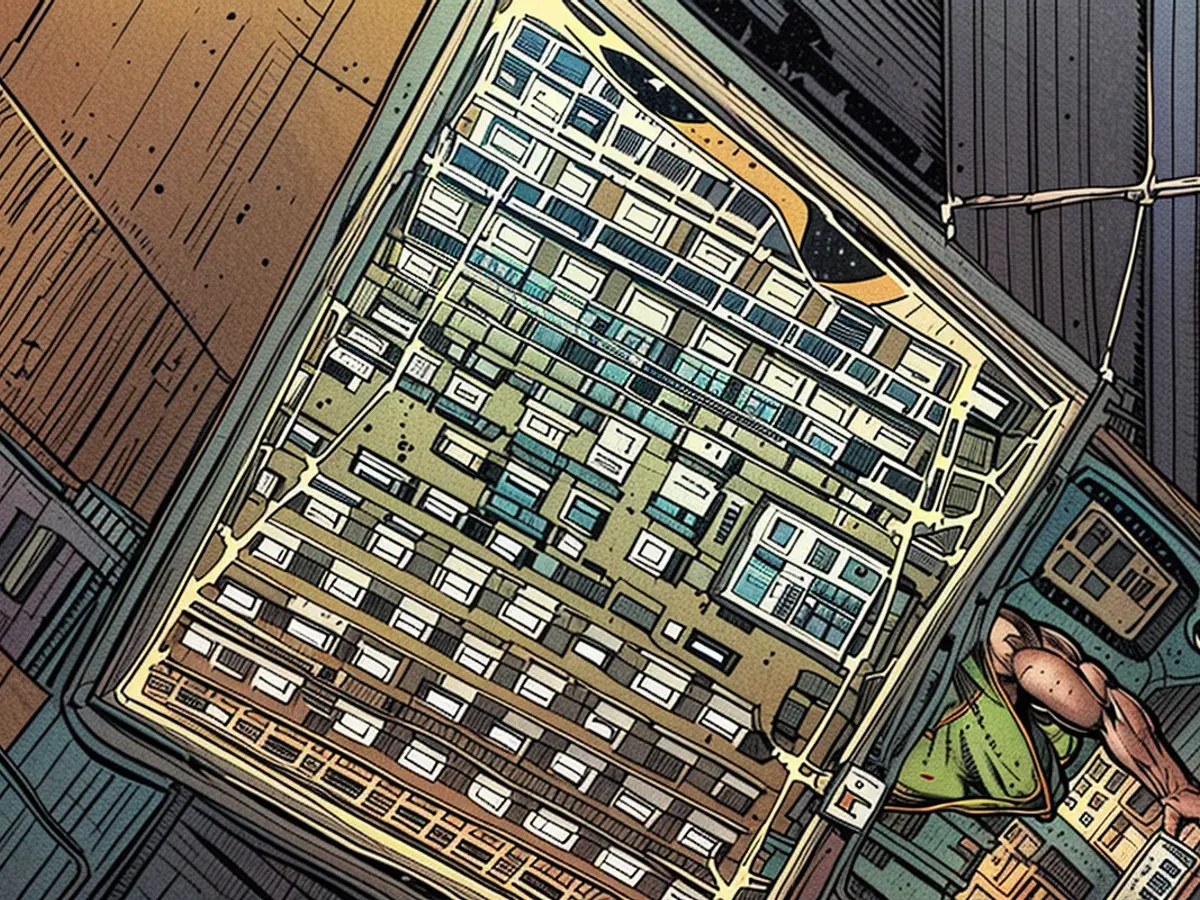
Long-range drone attacks have become a prominent element of the Russia-Ukraine conflict. As the land war has become increasingly arduous, the aerial campaign has gained momentum, with the primary advancement taking place in drone warfare.
In September, the unit's drones targeted a Russian ammunition depot situated between Moscow and St. Petersburg, in Tver region. The Ukrainians claimed the attack on Toropets resulted in the destruction of a depot containing Iskander tactical missiles, as well as aerial glide bombs and artillery ammunition. The strike caused substantial explosions, visible from a distance.
And in July, the Ukrainians declared they had struck a Russian oil refinery located along the Black Sea coast, resulting in a significant blaze.
However, Russian air defenses often thwart Ukrainian drone attacks. The GUR’s success rate, the unit informs CNN, could skyrocket from 50% to 95% if the United States permitted the use of Western weapons in assaults against Russian soil.
Russian President Vladimir Putin has cautioned that Moscow would perceive any attack supported by a nuclear power as a joint attack, singling out a mass launch of drones as a possible example.
Vector shared that many of Russia’s airfields, the starting points for most of their air raids against Ukraine, are beyond their drones’ range. Although their drones are highly effective, they are not always extremely efficient – swarms of them are often necessary to ensure targets are hit. “Of course, we can send the UAVs (unmanned aerial vehicles), and we've destroyed several locations. But it's still not sufficient,” Vector says.
“We're not asking for permission to launch missiles anywhere within Russia, we're interested in weapons that will help us shift this conflict away from our territory,” Vector clarified.
Inside the mission
Serge and Vector have spearheaded their unit's attempts to harm Putin at home.

Regardless of the targets, their missions adhere to a strict set of operating procedures, including clandestine meetings at various locations across Ukraine.
In an underground office with seemingly endless, drab Soviet hallways, Serge sits opposite Vector in a sparsely decorated room. No artwork adorns the walls, even the whiteboard remains blank. The meeting is brief.
“We'll deploy approximately 12 drones,” Serge informs Vector, who has a map in front of him detailing the Russian air defense and electronic warfare systems’ locations and ranges. They then agree upon the target approach time at around 3 am and the launch intervals for the drones.
Vector jots down two notes before standing abruptly and stating, “Everything is clear. Let's complete the task.”
Outside, Vector exits the vehicle and signals for the CNN team to follow. Their cellphones are switched off.
As twilight descends, the convoy pulls into a compound, articulated trailers lined up end-to-end. A solitary room illuminated by a desk and two sets of bunk beds serves as the sole source of light for miles around.
Men garbed in black, with balaclavas concealing their faces, wait for their instructions. Vector delivers a briefing, adding that this mission will also involve other units. He orders his men to prepare the routes and provides a small USB key containing the information required for the mission ahead.
“Any questions?” he queries. “None? Alright. Let's get to work.”
As his men scatter across the compound, Vector elaborates on the importance of the planning stage for these missions. “Planning is likely 60% of the success; everything depends on the planning,” he tells CNN.
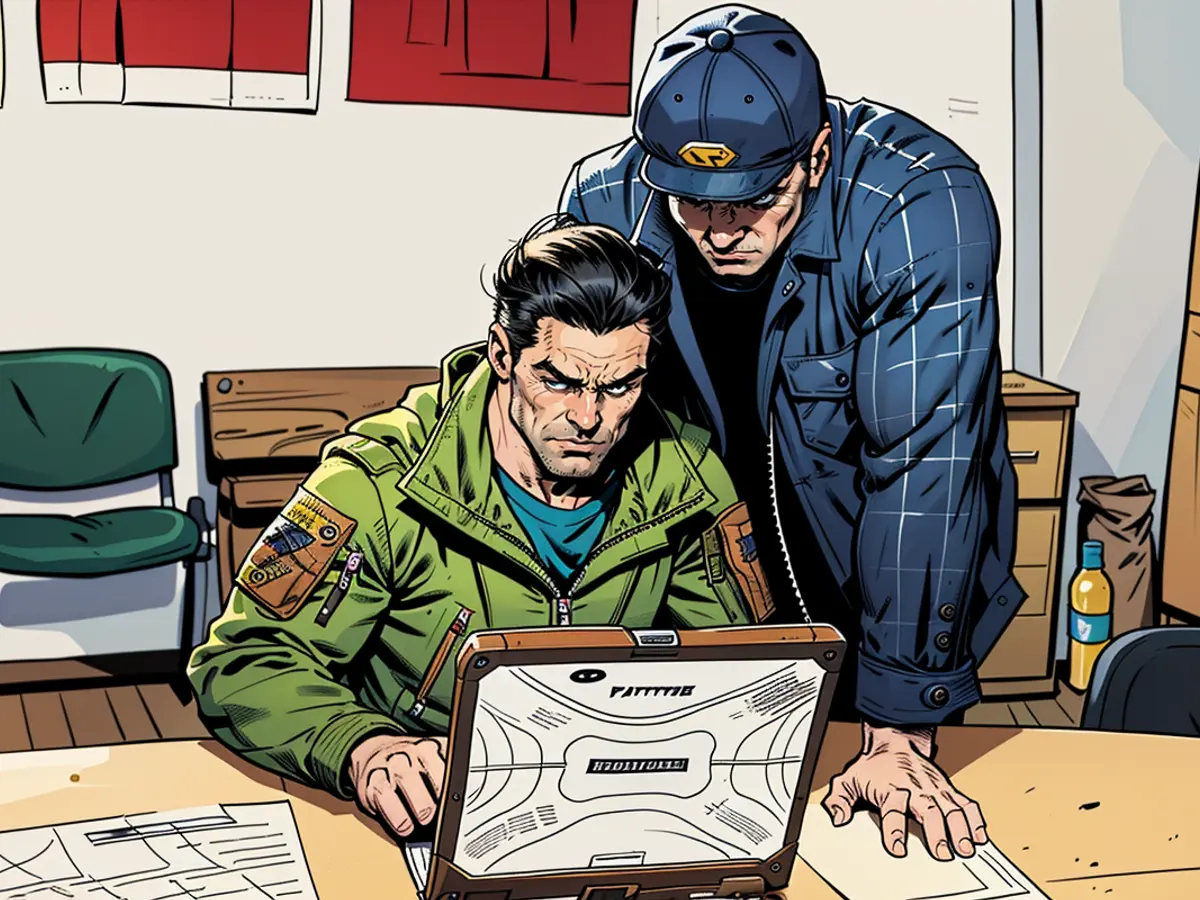
He emphasizes the effectiveness of Russia’s air defenses, particularly over the past 12 months. “We're successful guys, and we manage to find these openings,” he says, but it's a formidable challenge.
Each drone will be programmed with more than 1,000 different waypoints, designed to evade Russia’s comprehensive air defense systems. Vector concedes that there is an element of resemblance to a video game involved.
"Alright, let's have a chuckle," Vector suggests jovially, "but this ain't a joke. It's a battlefield."
Some of the soldiers in Serge's unit aren't lifelong soldiers like him. He's served more than 20 years in the Ukrainian army and began conducting drone missions in 2014 as Russian-backed separatists in Ukraine's eastern Donetsk and Luhansk regions split from Kyiv.
Decoy Drones
In a warehouse, a Liutyi drone, predominantly manufactured in Ukraine, stands in the middle surrounded by green camouflage-painted containers holding multiple Rubaka kamikaze drones.
Vector explains that these smaller drones are crucial to any mission. Their goal is straightforward: to overwhelm the air defenses and draw away Russian fire from the Liutyi, which often carries a payload of up to 550 pounds.
“They’re simple, and we can use them with or without payloads,” he says about the smaller drones.
Opening one of the containers, he pulls out a decoy drone. Strips of metal foil have been attached to the wings to deceive Russian radar.
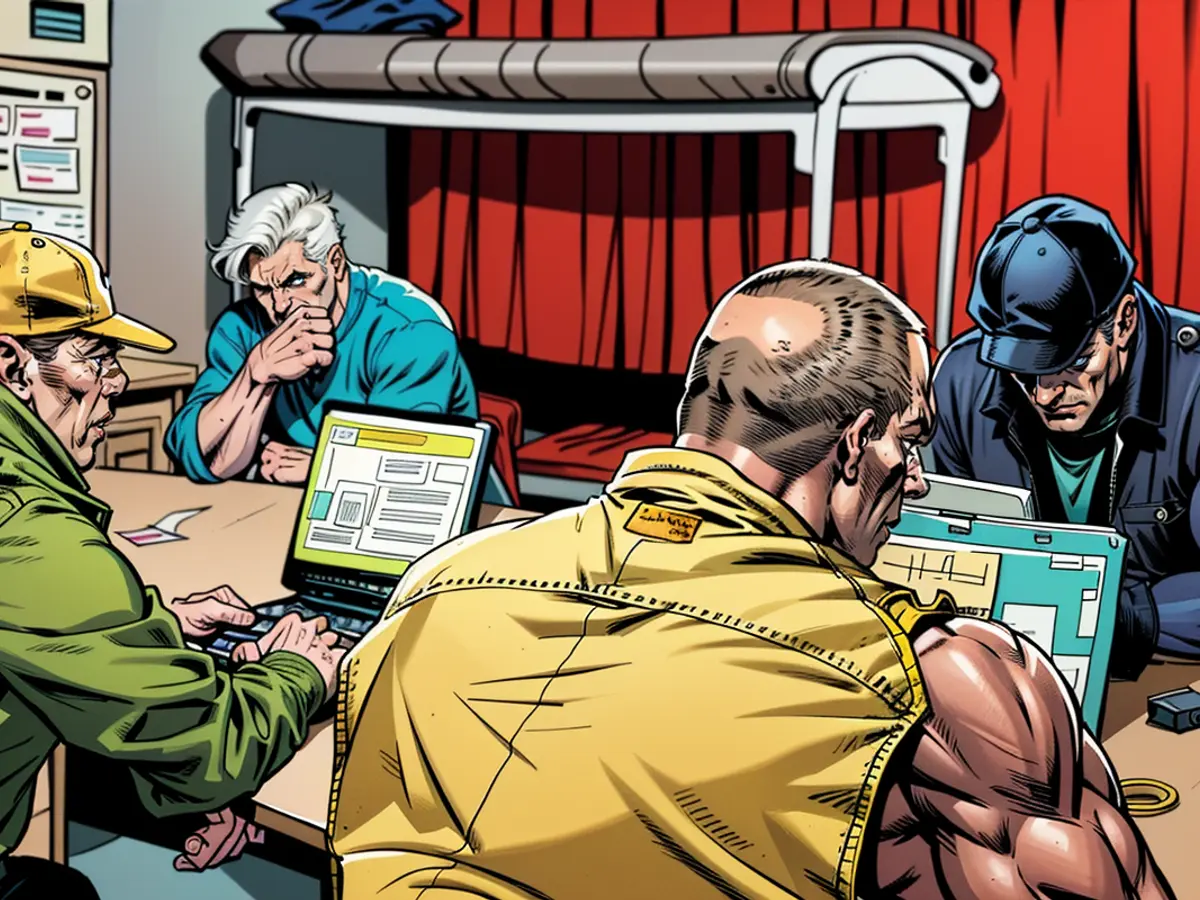
“We mix them up and send them from various distances and launch locations... they try to destroy them. They send helicopters and missiles, they turn on the radio electronic warfare,” Vector explains.
They only target military targets, Vector clarifies. “Russia invaded our country. They destroyed electricity, houses, cities, villages. But, he adds, “not everyone’s a fool. When they realize that war could come to them like they brought it to us, they will change something in their country. They will change the politics.”
One of the articulated lorries has pulled up for loading in near darkness. Drone bodies followed by wings are loaded three at a time into the truck by men whose faces are completely covered by balaclavas. The drones are then strapped down and ready for transport.
Across other parts of Ukraine, around 80 other GUR operatives are preparing 90 other drones, not all Liutyi, for flight.
Approximately 30% of all the drones launched will be for decoy missions, Serge says. The drones have been programmed to fly anywhere between 450 and 550 miles, with the Liutyis being the spearhead, aimed for the small town-turned-ammunition hub of Kotluban.
The men carefully load the warheads into the drone bodies. Each compartment is then sealed with the shrilling sound of a drill.
Serge and Vector, now in full combat uniform, observe the final preparations. This launch is one of the largest Serge has ever conducted, he says.
“Maybe (the Russian people) don’t understand what’s happening in Ukraine, but when these UAVs arrive, they understand clearly what we’ve been going through (for the past 10 years),” Vector adds.
Monitoring the Drones' Flight

In complete darkness, the drones are placed into position. The car with the pilots moves in behind. The propeller sputters into life, and the pilots ensure a smooth takeoff by sprinting down the tarmac. Once airborne, the fully autonomous drone commences ticking off its myriad waypoints.
Vector races after the drone, slams on the brakes, and proclaims, “perfect.” He performs a U-turn and blares patriotic music from his radio.
Earlier, he told CNN, “I don’t want my son, or other children, to have a war in the future, so I want to finish it in my lifetime.”
Back at the planning base, the hours pass, and Vector, Serge, and others keep track of the drones through trackers.
The success of the mission is monitored through three methods, they say: human intelligence on the ground, the messages seen on Russian Telegram groups, and, later, analysis using satellite technology. Only once all three have been assessed can a mission be considered a success or failure.
As the 3 a.m. arrival window approaches, Serge begins reading out messages from Telegram channels across Russia. The scope of this attack becomes clearer as various cities in southern Russia – Voronezh, Yekaterinburg, Rostov, and Volgograd – report drones entering their airspace.
A video from Voronezh shows one of the decoy drones soaring overhead. An audio clip of a distressed woman in the background leaves Vector laughing.
Through these Telegram channels, he says, “we can see that we’re making progress.”
Initial satellite imagery of the ammunition depot in Kotluban shows burned grass but seemingly little evidence of major explosions inside – apparent signs of a near miss.
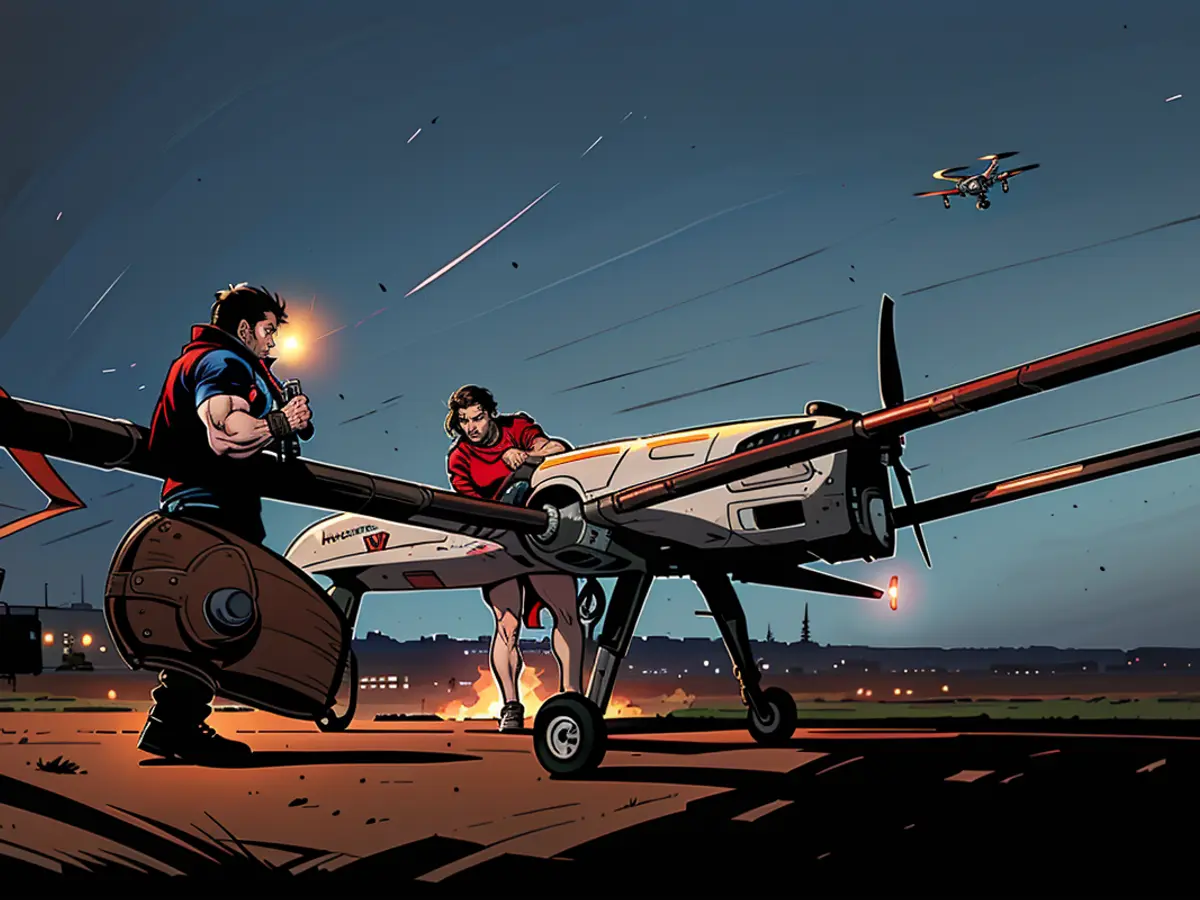
However, the GUR shared with CNN a video from the region of the depot. CNN was able to confirm elements of the video without a blur to validate its authenticity.
A defense intelligence source told CNN that their knowledge of the camera's location, combined with its distance from Kotluban, permitted them to deduce that the explosions inside the depot were substantial.
The video, sped up, shows 11 explosions all occurring within a 56-minute timespan between 2:22 and 3:18 a.m. – precisely the period during which the drones arriving from Ukraine were expected to land.
CNN was able to confirm, through sources, that a direct hit on the facility had taken place. CNN is not releasing the image to protect the source's anonymity, but it was taken within 72 hours of the attack.
The image shows many objects scattered around the building and a heavily damaged building.
A subsequent Maxar Technologies satellite image, obtained by CNN similarly, displays a decrease in debris around the area – suggesting that the Russian military had conducted a cleanup at the site – yet the same damaged building remains standing.
Ukrainian forces claim their mission to obliterate Iranian-supplied missiles was a complete triumph.
As drones approached Kotluban, Serge told CNN: "We're consistently reminding the enemy to ponder over their actions from February 2022. They should comprehend that we're progressing daily and our victory is getting nearer, while their defeat is becoming imminent."
CNN's Gianluca Mezzofiore and Paul Murphy were instrumental in compiling this report.
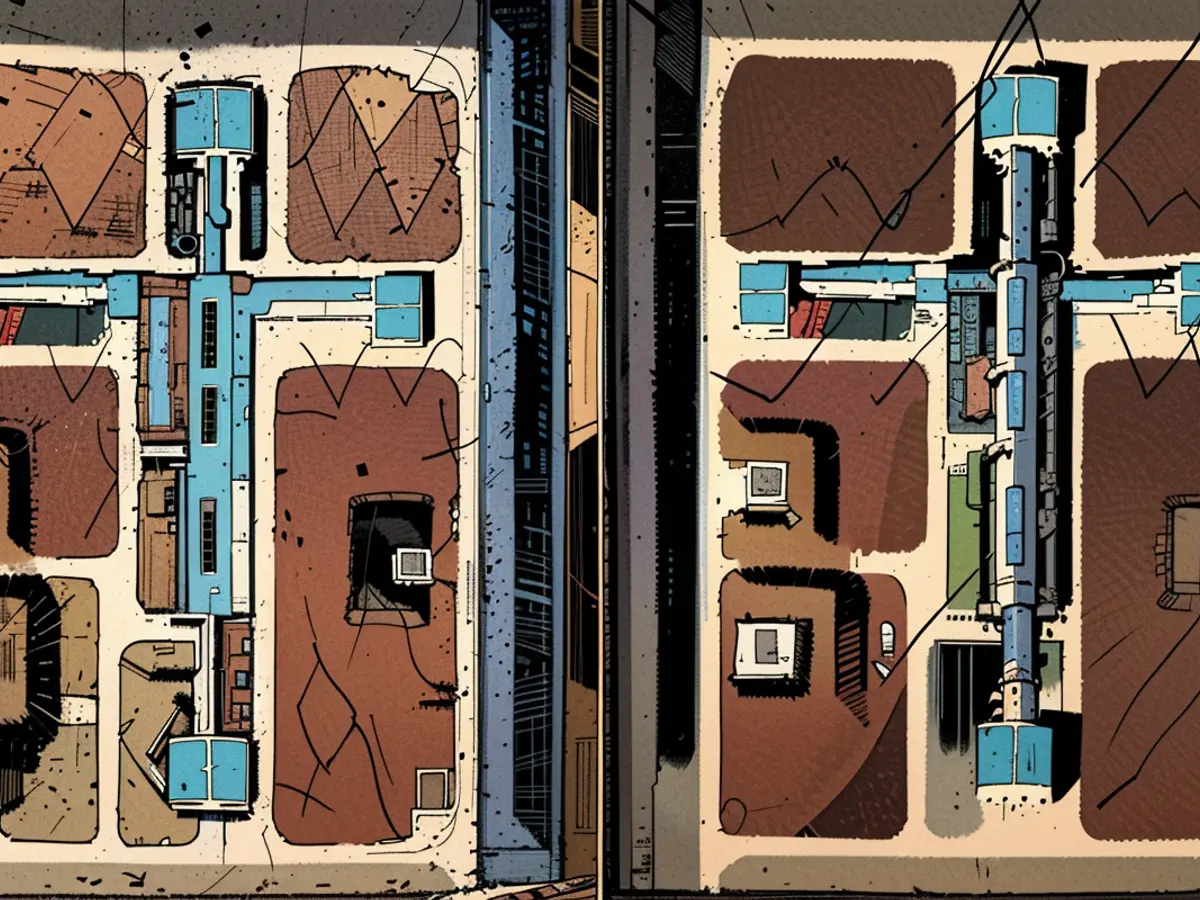
As the drone team prepares for the night's mission, they discuss their objectives: "Our target tonight is an ammunition facility in Russian territory, specifically loaded train carriages containing recently delivered Iranian missiles."
During their briefing, Vector mentions the location of their mission: "The facility is situated near the minuscule village of Kotluban, within the Volgograd region of southwestern Russia."
